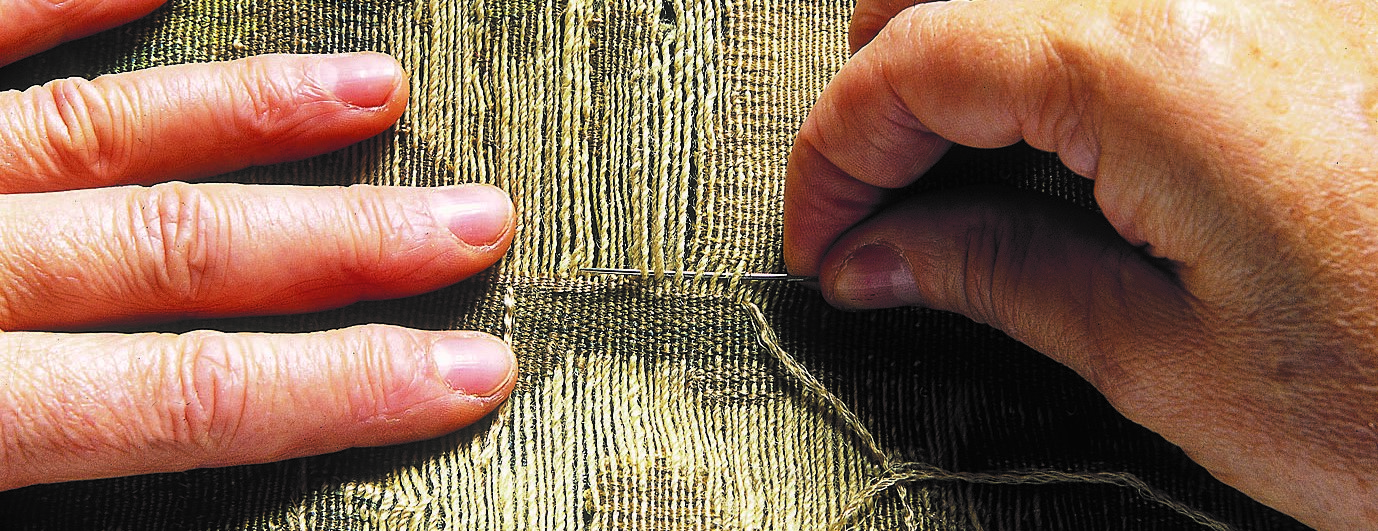TEXTILE DYEING IN THE PAST
DYEING WITH NATURAL DYES
Our ancestors dyed textiles with natural dyes, most of which were of plant origin, but some were of animal origin too. When dyeing with botanical dyes, using leaves, roots, bark, or extracts obtained by special processes, the shade of the colour depends on the composition of the soil on the growing site, the time of year the plants are harvested, and the use of fresh or dried parts of the plants. Animal extract-based dyes are obtained from insects and marine shells or other smaller organisms, and the different shades are mainly red and purple. The world’s oldest and most valued natural dyes of plant and animal origins include woad, indigo, and Tyrian purple.
Natural dyes, which make it difficult to achieve the same shade every time, began to be replaced by synthetic dyes in the second half of the 19th century. After the discovery of the first synthetic organic dye, mauveine or aniline purple, in England in 1856, the production of such dyes spread worldwide and contributed greatly to the growth of the fashion industry.
Woad and Indigo, Dyes of Plant Origin
Woad (Isatis tinctoria) is a plant that was widely used in antiquity. Sources report its use from England to Mesopotamia, Syria and Palestine. But it was known even earlier, as the Egyptian medical book Ebers Papyrus of 1552 BCE also mentions woad as an important dye and even reports the medicinal effects of the plant. Indigo is the equivalent of woad. It is extracted from the leaves of the indigo plant (Indigofera tinctoria), which is native to India and has been used in Europe since the early 17th century. In the traditional process, the crushed leaves of the indigo plant are soaked in water to ferment and extract the dyestuff, which is then dried and stored for further use. Unlike dyes made of other plants, in which yarn is boiled and the intensity and hue of the colour depend on the length of boiling, indigo’s colour intensity is achieved by alternately dipping the yarn into a dye bath and exposing it to air. Thus, with a high concentration of indigo extract, ten or more immersions are required to obtain a darker shade of blue.
Tyrian Purple and Carmine, Dyes of Animal Origin
Fabrics dyed with Tyrian purple, which was used by the Phoenicians as early as the 2nd millennium BCE, were highly prized and as such represented a status symbol. The purple was extracted from sea snails, the so-called spiny dye-murex (Bolinus brandaris), which secrete yellow mucus from their glands. This turns scarlet or purple when exposed to air. The snails were collected on the coasts of the eastern Mediterranean and tens of thousands of specimens had to be collected to produce the dye. One of the best-known insects from which we obtain the purple colour carmine is the cochineal (Dactylopius coccus), a parasite that lives on cacti in Central and South America. The extract is obtained from dried female insects and is also used in the food and cosmetics industries.
Dyeing Process for Wool or Silk Yarn
Wool and silk yarns must be properly prepared before they can be dyed with natural dyes. Wool yarns need to be washed with suitable detergents to remove lanolin, which makes dyes more difficult to absorb. Preparation of the yarn for further processing also includes ‘mordanting’, or soaking the yarn in a solution of metallic salts such as potassium alum and, more rarely, copper and iron sulphate (blue and green vitriol), which helps to bind the plant dyes better in the fibres during the dyeing process. If larger quantities of yarn are to be dyed, the mordanting process is separate from the dyeing process, whereas for smaller quantities, the two processes can be combined. The prepared yarn is immersed in a dye bath obtained by cooking or extracting dyes from plants. Depending on the type of dye and the desired shade, the dyeing process takes between half an hour and two hours, ending with the cooling of the dye bath and the yarn. Experience has shown that, in order to ensure good dye absorption, it is important to dry the dyed yarn first and only wash it after a week to remove excess unbound dye.
DID YOU KNOW …?
… That Phoenicia was also known as Canaan, meaning the land of scarlet, because its inhabitants were famous for making precious fabrics dyed scarlet?
… That the discovery of the synthetic organic dye mauveine not only helped to boost the textile industry, but also to advance medicine by helping to discover the bacterium that causes tuberculosis and to carry out the first important research into chemotherapy?
… That wool and silk can also be dyed with certain mushrooms and even with red teran wine? Well, both sure taste good as well, just make sure the mushrooms are edible and don’t overdo it when drinking wine!
WOOL AND SILK YARNS AND FABRICS DYED WITH NATURAL DYES ARE PRESENTED ON THE PANEL AND THE COUNTER.

